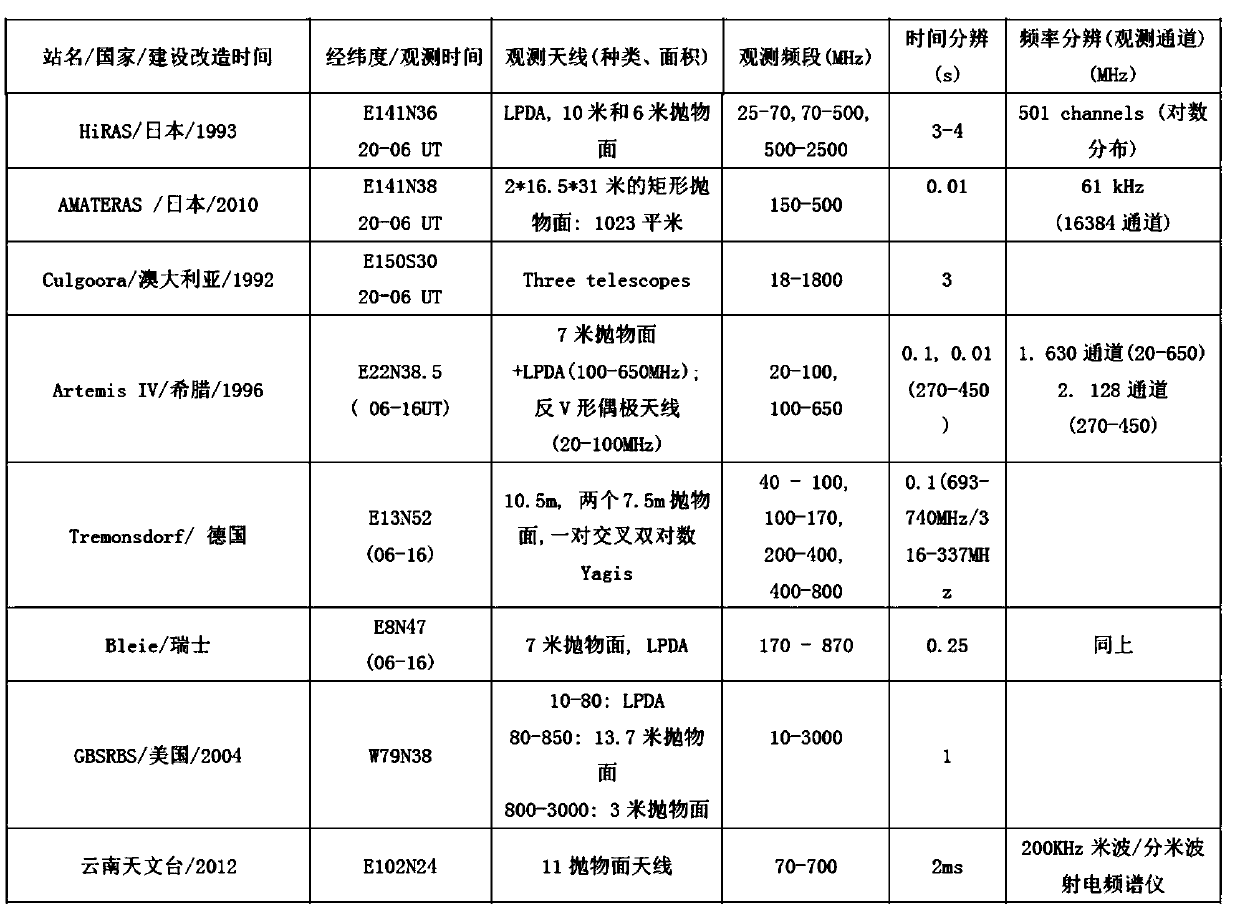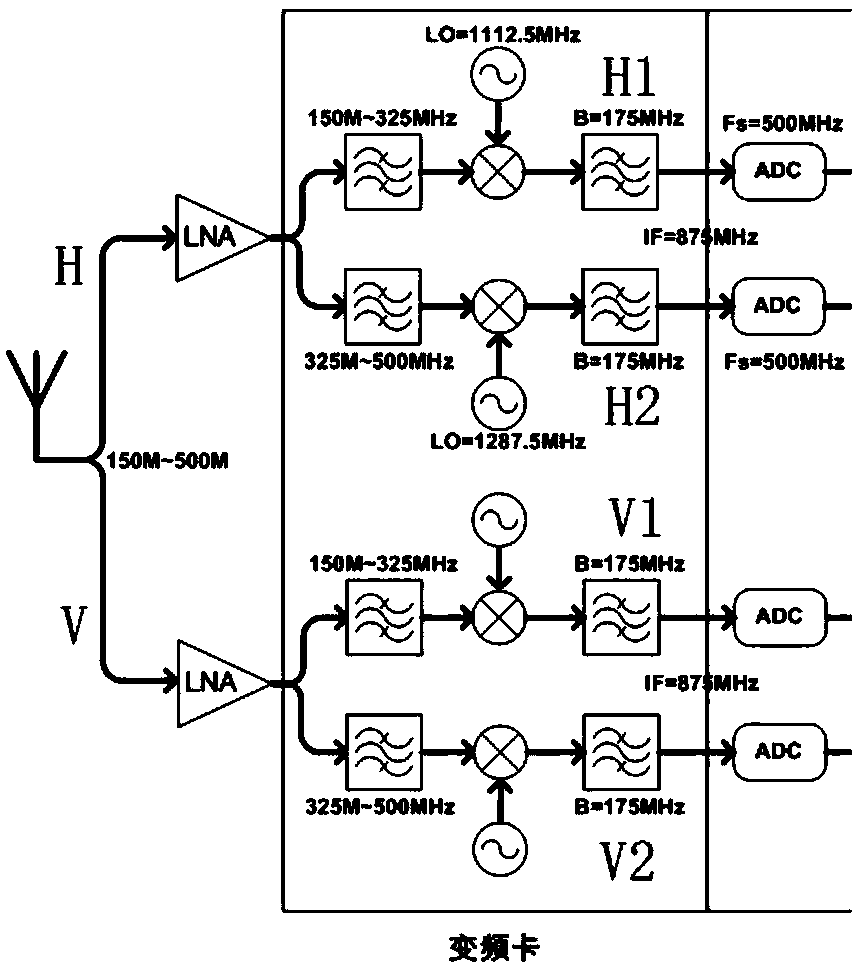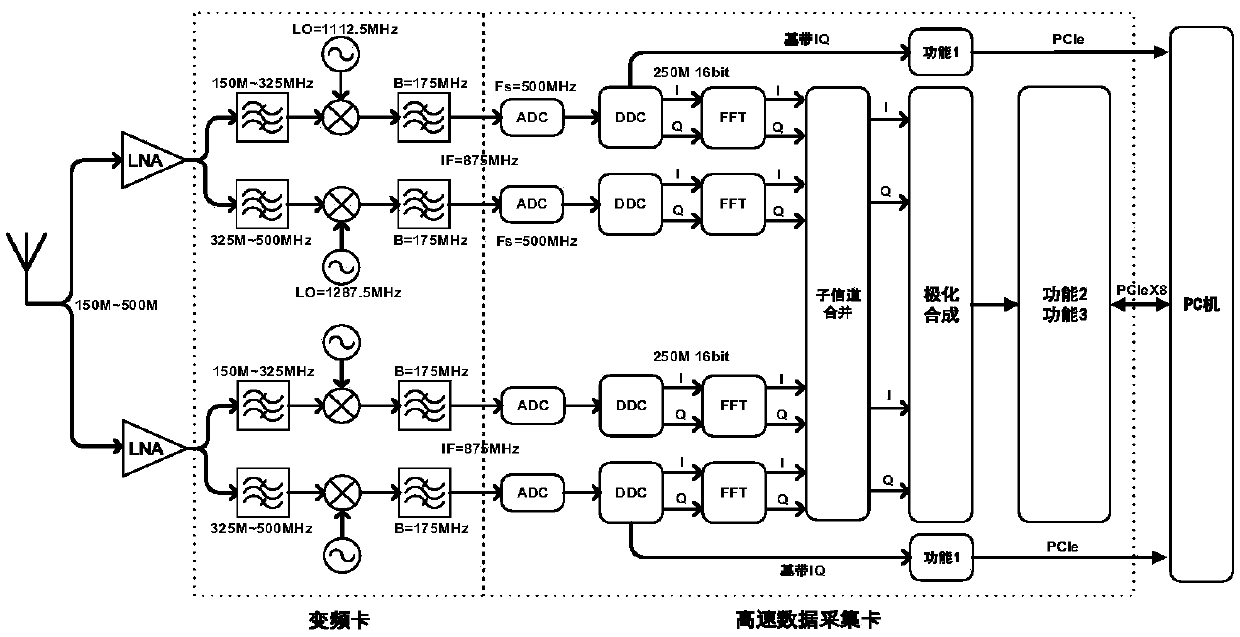Data compensation system and method for multi-channel frequency conversion of solar radio observation system
An observation system and solar radio technology, applied in the field of data compensation, can solve the problems of receiver left and right rotation signal error, affecting the accuracy of polarization characteristic parameter measurement, receiver error, etc., so as to reduce non-uniform errors and improve measurement accuracy. performance, ensuring accuracy
- Summary
- Abstract
- Description
- Claims
- Application Information
AI Technical Summary
Problems solved by technology
Method used
Image
Examples
Embodiment 1
[0057] In a typical implementation of the present application, such as image 3 As shown, an FPGA-based solar radio observation system multi-channel frequency conversion data compensation system is provided, and the system includes a frequency conversion card, an ADC converter, a computer and an FPGA.
[0058] The ADC converter is connected with the frequency conversion card, and is configured to: receive the data of each channel of the frequency conversion card, convert it into digital data, and upload it to the FPG.
[0059] The FPGA is configured to: respectively perform FFT operation on the digital data of each channel to obtain the frequency domain data of each channel, and upload it to the computer; receive the correction coefficient issued by the computer, and perform an FFT operation on each frequency point of each channel The data is corrected.
[0060] The computer is configured to measure the error of the amplitude-frequency characteristic and the phase-frequency c...
Embodiment 2
[0066] Another typical implementation of the present application, such as Figure 4 As shown, a data compensation method for multi-channel frequency conversion of a solar radio observation system is provided, and the method includes the following steps:
[0067] Step 1: The ADC converter receives the data of each channel of the frequency conversion card and converts it into digital data.
[0068] Step 2: FPGS performs FFT operation on the digital data of each channel to obtain the frequency domain data of each channel.
[0069] The FFT operation is performed on the FPGA inside the board to transform the time-domain signal into a frequency-domain signal.
[0070] Step 3: Measure the error of the amplitude-frequency characteristics and phase-frequency characteristics between the channels of the frequency conversion card; calculate the correction coefficient of each frequency point.
[0071] The measuring method of the error of amplitude-frequency characteristic and phase-frequ...
Embodiment 3
[0090] A performance test example of the multi-channel frequency conversion data compensation method for the solar radio observation system proposed by the present invention is listed below.
[0091] After the AD conversion in the acquisition board, the FFT operation is performed and converted into frequency domain data. It is necessary to perform a circular polarization synthesis operation on each frequency point. The polarization synthesis principle is as follows: Figure 7 shown. The circularly polarized wave can be generated by the synthesis of two orthogonal components with a phase difference of 90 degrees. According to the rotation direction of the vector endpoints, the circularly polarized signal can be left-handed or right-handed. That is, the complex number of channel A plus the complex number of channel B multiplied by 90 is the left polarized output; similarly, the complex number of channel B plus the complex number of channel A multiplied by 90 is the right polariz...
PUM
 Login to View More
Login to View More Abstract
Description
Claims
Application Information
 Login to View More
Login to View More - R&D
- Intellectual Property
- Life Sciences
- Materials
- Tech Scout
- Unparalleled Data Quality
- Higher Quality Content
- 60% Fewer Hallucinations
Browse by: Latest US Patents, China's latest patents, Technical Efficacy Thesaurus, Application Domain, Technology Topic, Popular Technical Reports.
© 2025 PatSnap. All rights reserved.Legal|Privacy policy|Modern Slavery Act Transparency Statement|Sitemap|About US| Contact US: help@patsnap.com



